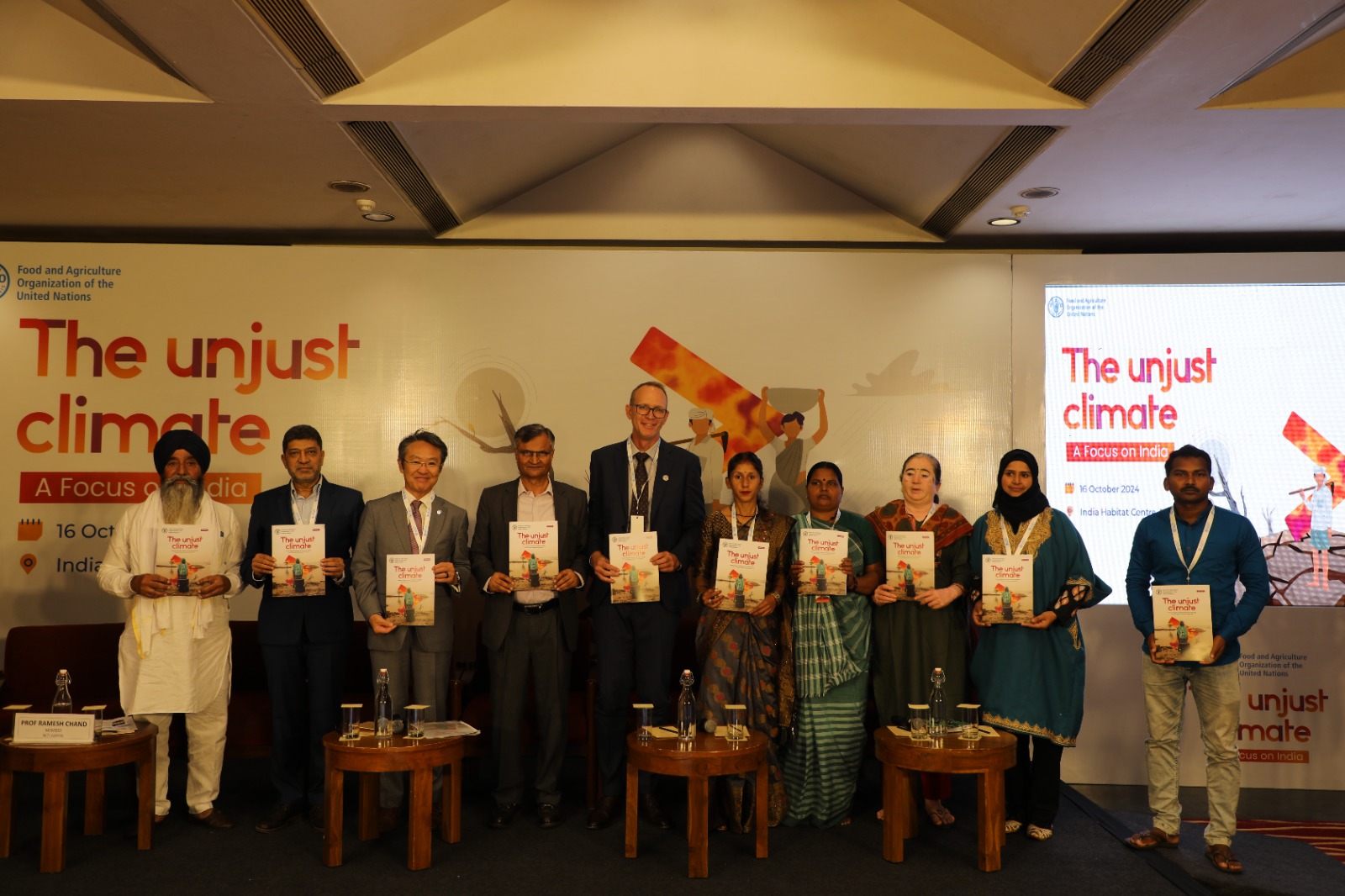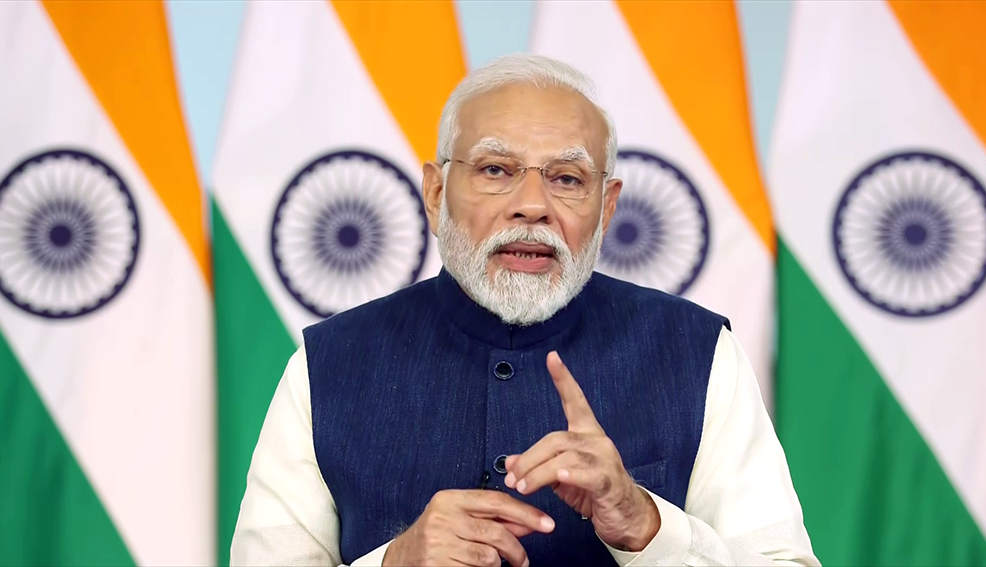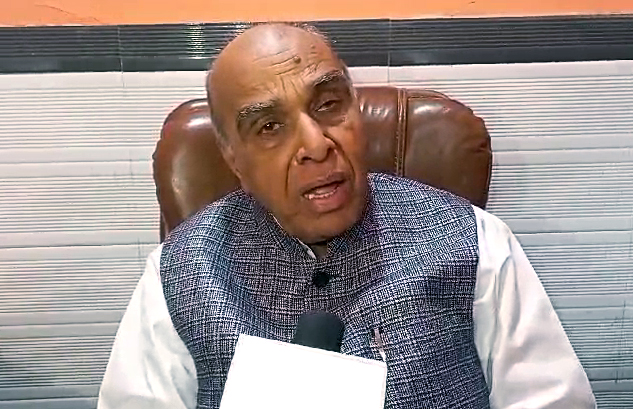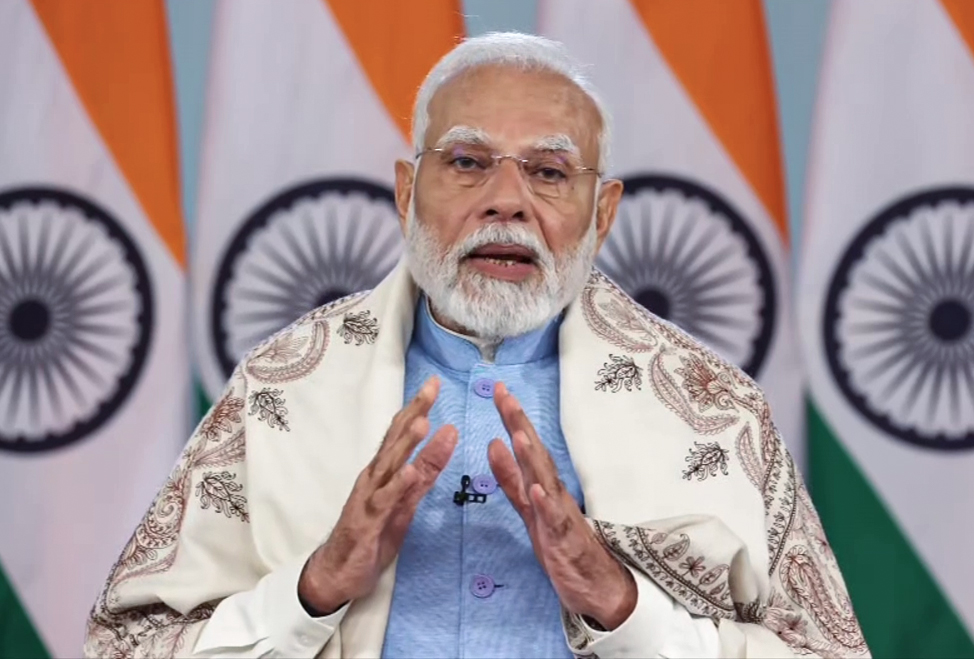A national-level dialogue on FAO’s report “The unjust climate” organized on 16 October in New Delhi, focused on the multidimensional poverty and climate vulnerabilities in rural parts of the country. It also provided policy recommendations on addressing the adverse effects of climate stressors, including long-term changes in temperatures, on the rural poor, which is critical for reducing persistent and transitory poverty in India.
The report has suggested that India has made remarkable strides in reducing rural poverty over the past two decades. Headcount poverty rates have dropped dramatically from 42.5 percent in 2005/06 to just 8.6 percent in 2022/24, according to the latest estimates from the India Policy Forum (Desai et al. 2024).
However, this success masks the growing challenge of transitory poverty. While many have risen out of poverty, a significant portion of the population has been pushed back due to unpredictable life events, particularly extreme weather events driven by climate change.
Speaking at the inaugural session, Prof Ramesh Chand, Member, NITI Aayog and Chair of the event, highlighted, “Climate change affects all, but disproportionately the most vulnerable. We are working proactively to address this and ensure that there is an equitable distribution of benefits amongst all’.
Takayuki Hagiwara, FAO Representative in India, emphasized, “Climate change hits India’s rural poor hardest, especially those trapped in multidimensional poverty. Structural inequalities and low adaptive capacity worsen the issue”.
Dr Nicholas Sitko, Senior Economist, FAO Rome presented the key findings of the Report. “To curb poverty in India, it is urgent to address the climate impacts on rural poor communities as they suffer the most from extreme weather events”, highlighted DrSitko.
Dr Rajasree Ray, Economic Adviser, Ministry of Environment, Forests and Climate Change, Franklin Khobung, Joint Secretary, Natural Resource Management, Ministry of Agriculture and Farmers’ Welfare, Dr Ashok Dalwai, former CEO, National Rainfed Area Authority amongst others actively participated at the event.
FAO’s “The Unjust Climate” report highlights a stark reality: each year, in low- and middle-income countries (LMICs), households headed by women in rural areas suffer significantly greater financial losses than those headed by men. On average, female-headed households lose 8 percent more of their income due to heat stress and 3 percent more due to floods compared to male-headed households. This translates to a per capita reduction of USD83 due to heat stress and USD 35 due to floods, totalling USD37 billion and USD16 billion respectively across all LMICs.
If the average temperatures were to increase by just 1°C, women would face a staggering 34 percent greater loss in their total incomes compared to men. Considering the significant existing differences in agricultural productivity and wages between women and men, the study suggests that if not addressed, climate change will greatly widen these gaps in the years ahead.
FAO analyzed socio-economic data from over 100,000 rural households (representing more than 950 million people) across 24 LMICs. By integrating this information with 70 years of geo-referenced daily precipitation and temperature data, the report examines how various climate stressors impact people’s incomes, labour, and adaptation strategies, differentiating based on their wealth, gender, and age.
Impacts differ not just by gender but by socioeconomic status, according to the data. Heat stress, or overexposure to high temperatures, exacerbates the income disparity between rural households classified as poor, who suffer a 5 percent greater loss (USD 17 per capita) than their better-off neighbours, and the figures for flooding are similar.
Extreme temperatures, meanwhile, worsen child labour and increase the unpaid workload for women in poor households.
Extreme weather also compels impoverished rural households to resort to maladaptive coping strategies. These may include reducing income streams, selling off livestock, and shifting spending away from their farms. These actions, however, exacerbate their vulnerability to long-term climate changes.
Policy Recommendations
The report suggests that addressing these challenges requires targeted interventions to empower various rural populations to engage in climate-adaptive measures.
1. Anticipatory social protection: Scaling up programs that provide financial support ahead of extreme weather events can prevent households from resorting to adverse coping mechanisms, such as selling off productive assets or reducing food consumption.
2. Workforce diversification: Investing in skills development and vocational training, combined with mentorship programs, can help rural poor households diversify away from climate-sensitive work. This would enhance their resilience to climate-induced income shocks. It also recommends linking social protection programmes to advisory services that can encourage adaptation and compensate farmers for losers, such as cash-based social assistance programs.
3. Gender-transformative approaches: Tackling discriminatory gender norms that prevent women from participating in non-farm employment is crucial. Programs that address these barriers can unlock new opportunities for income diversification, benefiting entire households. Inclusive climate actions are embedded in FAO’s Strategy and Action Plan on Climate Change and in the FAO Strategic Framework 2022–2031, where tackling the impact of climate change is mainstreamed in efforts to achieve the four betters: better production, better nutrition, better environment and better life for all.
4. Participatory agricultural extension: Encouraging group-based approaches to agricultural experimentation can help rural farmers adapt to changing climate conditions. These collective methods reduce individual risks and promote shared learning, improving resilience.
5. Access to adaptive technologies: Public investment in promoting climate-resilient agricultural technologies is critical for supporting land-constrained households.
Agricultural policies must address gender equality and women’s empowerment and intersecting vulnerabilities such as climate change. An analysis of agricultural policies from 68 low- and middle-income countries done by FAO last year showed that about 80 percent of policies did not consider women and climate change.
As India continues to progress in poverty reduction, addressing the vulnerabilities posed by climate change is essential. Targeted interventions that strengthen the adaptive capacity of rural households and reduce their exposure to climate risks are key to ensuring that poverty reduction gains are sustained. The findings of this brief provide critical insights for policymakers and development organizations as they seek to protect the most vulnerable segments of the population from the adverse effects of climate change.




















